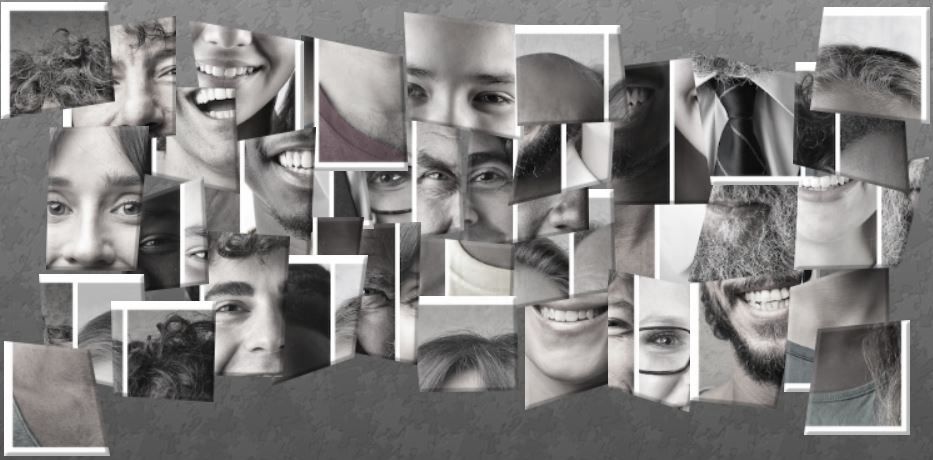Truth, now there’s a bucket of worms. What is truth? In court, witnesses swear to “tell the truth and nothing but the truth.” But even courts don’t consider all truth, only that which seems relevant to the matter being decided. In the most famous trial of all time, the judge of the case asked that exact same question. Pilate asked “What is truth?” right before pronouncing Jesus’ innocence. (John 18:38) But the truth of Jesus’ innocence didn’t stop Pilate from having Him tortured, scourged, and crucified. Political expediency overcame justice. And yet truth is the surest foundation one can build on. Perhaps that is why Paul began his list of attributes with “whatever is true.”
Welcome to reThink48 as we examine the first of eight attributes listed by Paul in Philippians. “Finally, brethren, whatever is true, whatever is honorable, whatever is right, whatever is pure, whatever is lovely, whatever is of good repute, if there is any excellence and if anything worthy of praise, dwell on these things.” (Philippians 4:8, NASB95) We’re looking at this verse with a different emphasis. Instead of focusing on what fails the tests, we’re looking to discover how to actively dwell on the items Paul lists. In this article, we consider “whatever is true.”
True
We all know the difference between true and false. Between truth, lies, half-truths(half-lies), hoaxes, and (dare I say it?) fake news. If we think about truth and what is true we discover that there are several categories to contend with. Empirical or scientific proof is one category. There’s truth based on our experience and perspective. Some truth is absolute such as the speed of light, the sun rises, and seeds grow. Some truth is relative as in my wife thinks rhubarb pie tastes great and I don’t. The whole fabric of following Jesus is built on revealed truth, God revealing His story and purpose over time. And that’s just some of them. So what truth is Paul talking about?
In this instance, Paul is speaking about fact-based truth. I like to call that objective truth. Seeing objective truth is like taking a step back to see the whole picture. It not only looks at the facts presented but also at what is behind them. It’s not cold and emotionless but seeks to avoid coloring or changing truth based on emotion. Objective truth recognizes and includes all other forms of truth but also takes into account their limitations.
False
In the same way that there are flavors of truth there are also shades of false. There is, of course, the obviously wrong answer such as 2+2=5. No matter how you try to cut it, that is wrong. But then we get to the whole rhubarb pie thing again because like some truth, some false is simply a matter of perspective.
For the sake of understanding let’s consider a few ways that something false can be shaded to the point it appears true. All have at their heart a desire for truth but have the possibility of missing the mark.
The first is perspective. What we experience is true, but it is flavored by our perspective. Let’s say that we witness a crime such as a bank robbery. From our perspective outside the bank, we can see two men getting into a car and speeding away. Is that the truth? at least part of it. But what about the third person that we couldn’t see from our angle? Was the car light blue or dark blue since some paint reflects differently based on position? And that’s not considering the effect emotions play on our memory. What we saw is true, but not all of the truth. This becomes a problem when we create an opinion that refuses to acknowledge its own limitation.
There’s a fancy term for the second way that false gets shaded into appearing like truth; confirmational bias. It’s a clinical term for only hearing or seeing “truth” that agrees with our own convictions of what the truth should be. In other words, we know we’re right because the crowd around us agrees. This affects everyone to some degree from the big issues of the day down to our personal relationships.
The third way that false can be shaded into truth is in our expectations. It’s related in a way to confirmational bias. Basically, we only see the results that we were expecting to see. Then, based on those expectations we arrive at a conclusion. Many have shipwrecked faith because of faulty expectations of God. Or they “know” ahead of time that someone is going to treat them a certain way.
Traps of the false
When false becomes truth, walls are built on the foundation of distrust and doubt. When we fail to allow for differences of perspective then those that differ become our enemies. After all, “I can’t be wrong.” Soon we adopt a lens that only allows the colors we want to see. Someone near us may do a hundred good, noble, and right things but one mistake or foul-up on their part only confirms what we knew all along about them. After all, everyone agrees. Do you see where that leads? A life built on a lie.
Benefits of the truth
Objective fact-based truth allows us to praise that which is good and right as well as address those things which are broken. It provides the pathway for discernment and wisdom. It opens up our hearts to both praise and correction. Truth allows us to trust that which is solid and shore up that which is weak. It takes into account the differences of truth based on perspective and experience without losing touch with the truth found in Jesus.
Practical application
So, how can we really focus on “whatever is true” as Paul instructs? Here are a few ideas.
First off, there’s always more to the story. No matter whether the source of the news is a friend, Facebook, a newspaper or broadcast, or what I call Internet fluff there’s always more to the story. We aren’t hearing or seeing all of the raw facts, but facts colored and digested by perspective, slant, pain, or the desired outcome. Be slow to draw hard and fast conclusions on that basis alone.
Our feelings can easily sway our perceptions both toward the good and the bad. That used car looked perfect sitting in the lot, and we wanted it so bad. Funny we never noticed that scratch, that worn seat cover, or that little wobble during the test drive. We tend to do that with other people as well. We assign assumptions of value, beliefs, and flaws based on our own perceptions, prejudices, and bias. When we only see folks through our expectations and experience, we steal from them the value of being created in the image of God.
In a way, we can also see ourselves through the colored lenses of perception, prejudice, and bias. I am after all always right, NOT! None of us are as good and right as we imagine or as bad as we fear. Not only do we need to see others with the objectivity of truth, but we also need to see ourselves that way as well.
So how do we see and dwell on “whatever is true?” I think that we can start by asking one simple question. What’s the rest of the story? When someone punishes a child – what’s the rest of the story? When I feel hurt and alone – what’s the rest of the story? When someone has a mile-wide smile – what’s the rest of the story? When we see or hear news that frightens us or angers us – what’s the rest of the story? When we read that thing on the Internet – what’s the rest of the story?
I think that this particular aspect of reThink48 impacts all the others. Truth anchors Paul’s list. Seeing “whatever is true” opens up many avenues of ministry, service, and relationship. It allows us to praise God for that which is valuable, good, and praiseworthy and leads us to intercede in prayer for that which is broken and painful.
**Did you notice the picture? We now have corners. Fitting for how truth anchors our lives and the rest of Paul’s list.
- Mark: An Insignificant Seed - June 4, 2025
- Mark – Listen Carefully - June 2, 2025
- Mark: Consider the Sower - May 28, 2025




